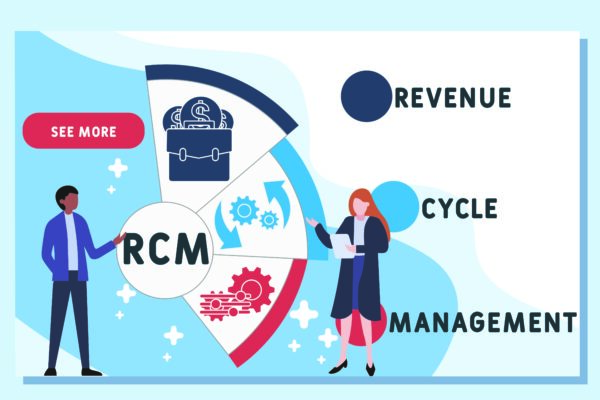Based on reports from the Healthcare Financial Management Association (HFMA), U.S. healthcare providers are losing about $125 billion annually because of inefficiencies in their revenue cycles. Such losses usually arise from unnecessary claim denials, billing errors, and outdated, cash flow-disrupting processes that stretch thin the organization’s resources.
With organizations working with tighter margins and higher costs, being able to perfect RCM is no longer an option for any institution. So, what are the 13 steps of revenue cycle management we should follow to optimize our operations?
What is Healthcare Revenue Cycle Management (RCM) and Why is it Important?
Revenue Cycle Management (RCM) is the financial lifeline of the healthcare facility. It includes all administrative and clinical functions in managing the claims, payment, and revenues for health care services. These processes begin with the patient’s initial appointment or consultation and end with the last installment’s payment for the treatment.
Patient registration, insurance verification, charge capture, claim submission, payment posting, and denial management are among the different segments in RCM.
With such functions, accurate billing and payment shall happen timely and within the bounds of regulations, all of which make up an important part of overall efficiency and financial performance.
The financial viability of healthcare providers is determined by an effective revenue cycle management practice. Well-organized processes, fewer billing errors, and prompt payment all contribute directly towards added revenue resulting in greater patient satisfaction.
What are the 13 Steps of Revenue Cycle Management?
Efficient RCM (revenue cycle management) of healthcare is vital to reduce errors, streamline financial processes, and guarantee timely reimbursements.
Below we’ll discuss the 13 such essential steps in helping healthcare organizations optimize operations and improve financial outcomes.
1. Patient Pre-registration
The base of an efficient revenue cycle is the patient pre-registration form. It involves collecting very important patient information and further validating insurance eligibility before the service is rendered.
The data will be collected accurately in the front end of the process, so fewer errors will occur in claim filing and billing, thereby decreasing denials and enhancing patient satisfaction. Online forms for pre-registration, coupled with compliance with HIPAA standards, significantly improve the process and instill trust.
2. Insurance Verification
Insurance verification is an essential method in establishing a patient’s coverage and comprehension of any financial obligations incurred by the patient. This proactive verification of insurance details can prevent healthcare providers from denial of claims and ensure that money does not become an issue when rendering care.
Real-time verification and preemptive communication with payers can facilitate this entire process and ensure that it is clear for both the patient and the healthcare provider.
3. Patient Registration
Patient registration serves as the bridge linking the first contact from the initial point of contact to receiving healthcare. In entering a patient’s record, all relevant information regarding a patient’s medical history, demographic information, and authorizations for treatment is entered into the system.
Accuracy in registration is prized above all else because, if not, it can cause havoc in the revenue cycle, resulting in miscommunication during the billing process. This entire process works well if trained staff operate with integrated systems. These factors lay a solid foundation for the efficient processing of claims.
4. Charge Capture
Charge capture is a pivotal phase where all billable services, procedures, and materials are meticulously documented. Missing or inaccurate charges can lead to revenue loss, making this step integral to the overall financial health of an organization.
Healthcare providers may guarantee adherence to regulations and optimize profits by using automated systems and carrying out frequent assessments.
5. Claim Submission
Submitting accurate claims is essential to securing timely reimbursements. Clean claims, free of errors, reduce the likelihood of denials, and accelerate payment cycles.
Transitioning to electronic claims submission can greatly enhance this process, ensuring claims are processed quickly and comply with payer-specific requirements.
6. Claim Adjudication
Claim adjudication is a process used to analyze the claims that have been submitted to an insurance payer and determine whether the claims are correct and comply with the insurance policy guidelines.
Whether a claim should be paid, denied, or adjusted can be a function of adjudication. Healthcare providers can monitor claim status in real-time and set up systems for appeal on solid grounds that would care for their revenue.
7. Payment Posting
Payment posting is the step where received payments are accurately applied to patient accounts. This process provides a clear financial picture, helping healthcare organizations track revenue and identify discrepancies. Automation tools and regular reconciliation practices are key to maintaining precision in this phase.
8. Denial Management
Denial management focuses on addressing rejected claims promptly to recover lost revenue. Healthcare organizations may increase productivity and lower the likelihood of future problems by looking into the underlying reasons for rejections and putting remedies in place.
Regular training for staff and leveraging automation for denial tracking and resolution are effective strategies for success in this area.
9. Accounts Receivable Follow-up
Managing accounts receivable (A/R) is essential for ensuring timely cash flow. This involves monitoring outstanding claims and following up with insurance companies and patients to settle balances.
Prioritizing older accounts and maintaining persistent communication can significantly reduce the aging of receivables and maintain financial stability.
10. Patient Statement Processing
Patient statement processing ensures that patients receive clear and detailed statements of their financial obligations. Transparency in this step is vital for building trust and facilitating timely payments.
Statements should be easy to understand and delivered promptly after insurance adjudication, with accessible support to address patient concerns.
11. Patient Payment Collection
Collecting patient payments is a significant source of cash flow. The best possible patient education regarding financial responsibilities and payment flexibilities will make the entire process smoother.
However, billing should be transparent and there should be compassionate communication in favor of enhancing patient satisfaction and ensuring financial viability for healthcare providers.
12. Revenue Analysis and Reporting
Revenue analysis and reporting are vital for the detection of inefficiencies within an organization and track its financial health. As these reports are complemented with insights from key performance indicators (KPIs), they help healthcare providers manage their affairs in an enlightened manner.
Benchmark them against their industry counterparts and develop a cross-functional dialogue to ensure continuous and sustainable growth.
13. Compliance and Auditing
Compliance and auditing constitute the supporting structure of a well-functioning revenue cycle. Regular audits fetch discrepancies, mitigate risks, and maintain adherence to healthcare regulations.
With a culture of compliance, healthcare providers will ensure safe operations by securing themselves from penalties and upholding ethical standards.
How to Improve Your Revenue Cycle Management Process
Here are actionable steps to improve your revenue cycle management process:
- Accurate Patient Data Collection
Make sure that all patient information is correct at the point of registration to minimize claim rejections and delays in reimbursement.
- Comprehensive Coding Practices
Adopt advanced coding systems and train staff on accurate documentation to reduce errors and improve claim approval rates.
- Automate Billing and Claims Processes
Leverage automation tools for submitting claims electronically, saving time and lowering administrative costs.
- Proactive Claims Monitoring
Implement a system to track pending claims, identify bottlenecks, and address rejections promptly to avoid revenue loss.
- Flexible Payment Options for Patients
Provide multiple payment methods and transparent billing to increase patient satisfaction and improve collection rates.
- Data-Driven Insights
Use analytics to monitor performance metrics and uncover areas for continuous optimization, ensuring a more efficient revenue cycle.
Strengthen Your Revenue Cycle with Physician Risk Management
However, if you want to simplify the optimization of the RCM, you can leave the hard work to us.
Physician Risk Management knows about all the challenges healthcare providers face and offers practical solutions to optimize your revenue cycle. We’re here to optimize your revenue growth whether it’s through streamlining processes, minimizing errors, or enhancing compliance.


